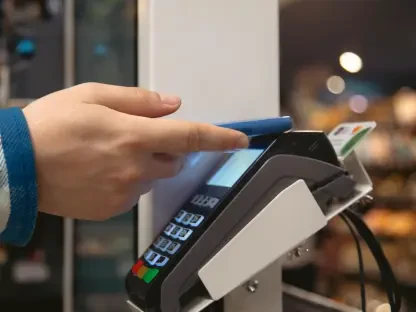Welcome to an insightful conversation with Zainab Hussain, a renowned e-commerce strategist with deep expertise in customer engagement and operations management. With years of experience in retail technology, Zainab has a unique perspective on how digital tools and consumer behaviors are shaping the future of shopping. In this interview, we dive into the latest trends from Malaysia, where AI is revolutionizing the retail landscape, physical stores remain a vital touchpoint, and online platforms are redefining convenience. We’ll explore how these shifts are influencing shopper expectations and what retailers are doing to keep up with this dynamic environment.
How has the adoption of AI in shopping among Malaysians grown, and what’s driving this trend compared to global patterns?
I’ve seen a remarkable surge in AI adoption among Malaysian shoppers, with 58 percent now using it to enhance their shopping experiences, far outpacing the global average of 37 percent. This trend is driven by a cultural openness to technology and a strong digital infrastructure in Malaysia. Shoppers here are eager for tools that make their lives easier, whether it’s finding new products or getting personalized suggestions. AI platforms are filling that gap by acting like personal assistants, curating ideas and uncovering brands that might otherwise go unnoticed.
What are some specific ways AI is inspiring Malaysian shoppers in their daily purchasing decisions?
AI is a game-changer for inspiration, with 71 percent of Malaysians saying it helps spark ideas for things like meals or outfits. For instance, someone might use an AI tool to suggest recipes based on ingredients they have at home, complete with links to buy missing items. Or they might get outfit recommendations tailored to an event, pulling from a variety of online stores. It’s this level of personalization and convenience that makes AI so appealing—it’s not just about shopping; it’s about solving everyday problems creatively.
Why do you think so many Malaysian shoppers still value physical stores, despite the rise of digital options?
Even with the digital boom, over half of Malaysian shoppers prefer physical stores because they crave tangible experiences. They want to see, touch, and try products before committing—whether it’s feeling the fabric of a shirt or testing the fit of a shoe. There’s also the instant gratification of walking out with a purchase, which online can’t replicate. This sensory connection, combined with the social aspect of shopping in person, keeps brick-and-mortar relevant, especially for categories like fashion and electronics.
How are retailers in Malaysia enhancing in-store experiences to meet modern shopper expectations?
Retailers are stepping up by integrating technology and creativity into physical spaces, as 55 percent of shoppers want more exciting in-store experiences. Some are using augmented reality to let customers virtually try on clothes or visualize furniture in their homes before buying. Others are hosting special events or setting up in-store cafes to turn shopping into a lifestyle experience. These innovations create a sense of discovery and engagement, making a trip to the store feel less transactional and more like an adventure.
What factors make online shopping so attractive to Malaysians, and how are retailers responding to this shift?
Online shopping wins with speed, convenience, and variety—62 percent of Malaysians cite speed as a key factor, while 50 percent love the wider selection not found in local stores. Retailers are adapting by optimizing their platforms for quick navigation and fast delivery, ensuring customers get what they want without delay. They’re also expanding their online catalogs and partnering with logistics providers to meet the demand for diverse products, making sure the digital experience feels just as rewarding as stepping into a store.
With social media becoming a major shopping channel, how is it influencing consumer behavior in Malaysia?
Social commerce is huge, with 57 percent of Malaysians shopping on platforms like Instagram or TikTok about six times a month. It’s reshaping behavior by blending entertainment with purchasing—people see a product in a video or post, get inspired, and buy it on the spot without leaving the app. This seamless integration taps into impulse buying and community trust, as recommendations from influencers or peers feel more authentic. It’s a powerful shift that’s making social platforms a core part of the retail journey.
How are Malaysian businesses leveraging technology to improve the overall customer experience?
Businesses are investing heavily in tech, with 57 percent planning to enhance customer experiences through innovations like new payment methods and self-service kiosks. They’re also focusing on streamlining checkouts with features like one-click purchases to minimize friction. Beyond that, AI is being used not just for marketing but to personalize interactions, prevent fraud, and optimize operations. These investments show a commitment to meeting shoppers’ expectations for seamless, tailored experiences across every touchpoint.
What is your forecast for the future of retail in Malaysia, especially with the integration of AI and unified commerce?
I believe the future of retail in Malaysia will be defined by deeper integration of AI and unified commerce. AI will evolve from a novelty to a necessity, acting as a personal shopper that anticipates needs and curates experiences with pinpoint accuracy. Meanwhile, unified commerce—bringing online and offline channels into a single, cohesive system—will become the standard, as only 52 percent of businesses currently offer it. This will mean smoother transitions for customers, like browsing online and returning in-store with no hiccups. The retailers who thrive will be those who balance cutting-edge tech with the human touch that Malaysian shoppers still crave.









